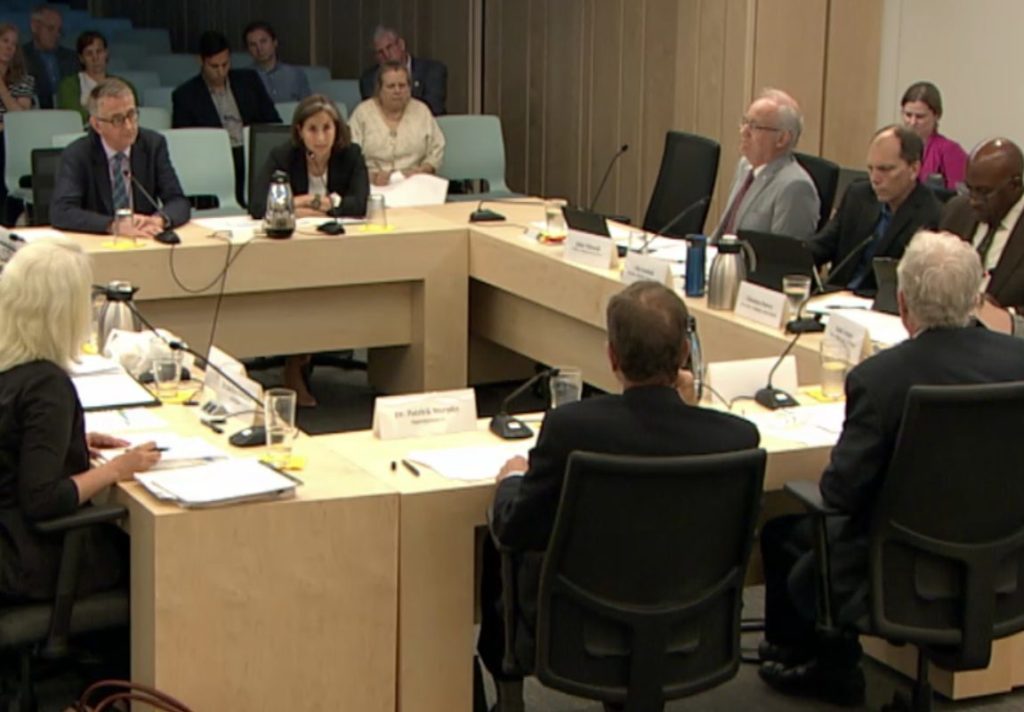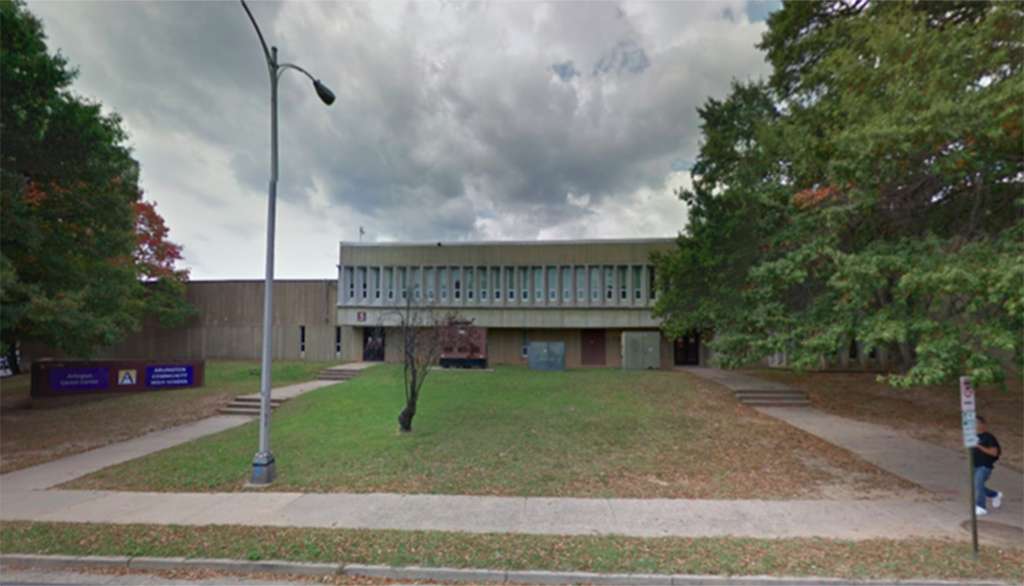(Updated at 4:40 p.m.) Arlington school leaders believe they’ll need plenty of help from the County Board to build enough schools to keep pace with a rapidly growing student body over the next decade — but the county’s own financial pressures will likely limit just how much it can lend a hand.
The School Board and County Board convened for a joint meeting on Tuesday (May 29) as officials pull together their respective capital improvement plans, documents outlining construction spending over the next 10 years, in order to better coordinate the process.
Though neither board has finalized its CIP, the School Board is a bit farther along in the process and is currently eyeing a roughly $631 million plan for approval. But to make that proposal more viable, the Board told their county counterparts that they’ll need help in a few key areas: finding off-site parking and athletic fields for high schoolers, taking on debt to build new schools and securing more land for school buildings.
“Given the constraints we have, we have to be very creative,” said School Board member Nancy Van Doren. “And we need help.”
While County Board members expressed a willingness to work on those issues, they’re facing their own problems. County Manager Mark Schwartz’s $2.7 billion proposal comes with hefty cuts to some transportation improvements and neighborhood infrastructure projects, as the county grapples with increased funding demands from Metro and a shrinking commercial tax base.
In all, Schwartz is envisioning sending $396 million to Arlington Public Schools for construction projects through 2028, but even that amount might not help the school system meet its planned building needs.
“The amount of money we have in there for schools does not match the amount of money the schools are asking for,” Schwartz said during a Wednesday (May 30) town hall on the CIP. “They’re asking for more.”
In part, that’s because the School Board has been working to find a way to add more space for high school students a bit sooner than they originally anticipated, and add more amenities for those students in the process.
Members have spent the last few weeks wrestling with how to implement a “hybrid” plan the Board approved last summer, avoiding the need for a fourth comprehensive high school by adding seats to the Arlington Career Center (816 S. Walter Reed Drive) and the “Education Center” site adjacent to Washington-Lee High School (1426 N. Quincy Street). They’ve been especially concerned with how to most efficiently add features like athletic fields and performing arts space to the Career Center site, over concerns from parents that building space for high schoolers without those amenities would present an equity issue.
As of now, the Board is nearing agreement on a plan to build out space for a total of 1,050 high schoolers at the Career Center by 2024, complete with a multi-use gym and “black box” theater. APS would add a synthetic field on top of an underground parking garage at the site two years later.
Other, more ambitious options were dubbed “budget busters” by APS staffers, but even this plan is $33 million more expensive than Superintendent Patrick Murphy’s original proposal. It would also force the school system to run afoul of one of its principles of financial management: a pledge to avoid spending more than 10 percent of the annual budget on debt service costs.
Accordingly, Board members were quite interested Tuesday in learning how the county might take on some of that debt, or help APS bring down the costs of that new construction, perhaps by helping the school system find off-site parking instead of building new garages or better coordinating the of sharing county fields.
On the former point, County Board member John Vihstadt expressed a willingness to find out how such a debt collaboration would work. Schwartz, however, was not especially optimistic about the prospect, noting it would require some hard choices on the CIP.
“That would mean taking either a project away on the county side or adjusting the timing of a project on the county side,” Schwartz said.
County Board members were much more willing to try working together on sharing fields, and on helping APS find new school sites. Vice Chair Reid Goldstein pointed out that such promises hardly addressed the “elephant in the room.”
“The way to move us away from getting close to the 10 percent [debt limit] is to raise the budget and that means taxes,” Goldstein said. “You folks have that power and we don’t.”
Schwartz has said he’ll likely call for tax increases in next year’s budget, but such discussions are still a year away. First, both boards need to finalize their CIPs — the School Board is set to do so on June 21 while the County Board’s CIP approval is scheduled for July 14.




